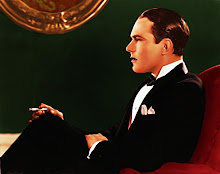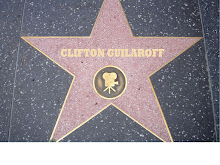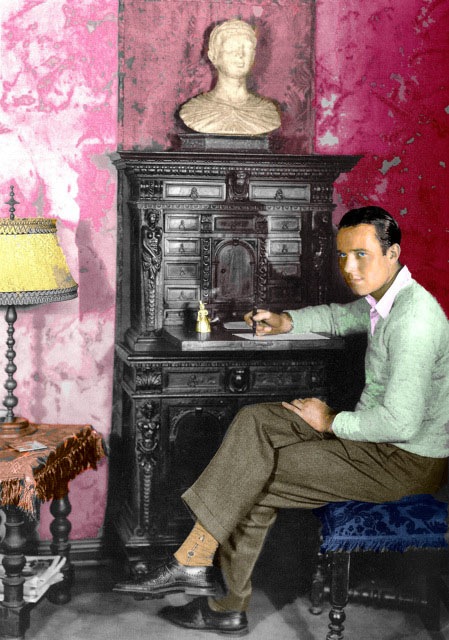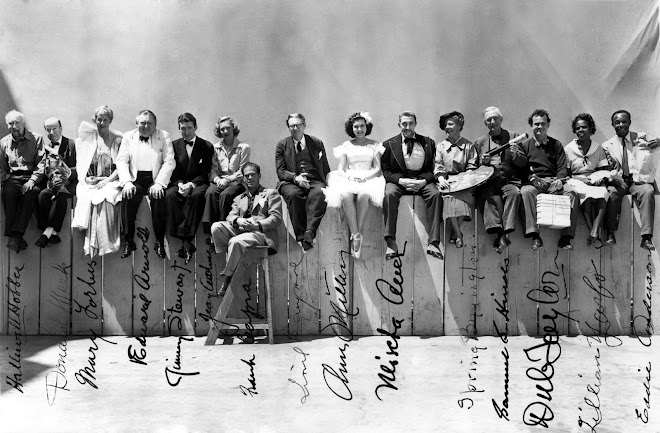Take a moment to get aload of some of Marion's work tip of the hat for that tribute to Basil Nelson.
Now from Wiki: Davies was born Marion Cecilia Dovras, you will see this spelled Douras and Douvras and god knows what else in Brooklyn, New York, the youngest of five children born to Bernard J. Dovras, a lawyer who moved in New York City political circles, and Rose Reilly, formerly of Jersey City, New Jersey. Her elder siblings included Rose, Reine, and Ethel. A brother, Charles, drowned at the age of 15 in 1906. His name was subsequently given to Marion's favourite nephew, the screenwriter Charles Lederer, the son of Marion's sister Reine Davies.
The Dovras family lived near Prospect Park in Brooklyn. The sisters changed their surname to Davies, which one of them spotted on a realtor's sign in the neighborhood. Even at a time when New York was the melting pot for new immigrants, having an Anglo-Saxon surname greatly helped one's prospects. The sisters all hit the Great White Way, and Marion was signed on as a chorine in Florenz Ziegfeld's annual "Ziegfeld Follies" revues.
Davies is best remembered for her relationship with newspaper tycoon William Randolph Hearst. Even during her career, her high-profile social life often obscured her professional career. In her posthumously published memoirs, Davies claimed she wasn't an actress, knew nothing about politics, and described herself as a "silly, giggly idiot."
After making her screen debut in late 1916 in a fashion newsreel, modeling gowns by Lucile (Lucy, Lady Duff-Gordon), she appeared in her first feature film in 1917's Runaway Romany. It was a film written by herself and directed by her brother-in-law, the prominent Broadway producer George W. Lederer. The following year she starred in three films, The Burden of Proof, Beatrice Fairfax, and Cecilia of the Pink Roses. Playing mainly light comedic roles, she quickly became a major movie personality, making a small fortune which enabled her to provide financial assistance for her family and friends.
Cecilia of the Pink Roses in 1918 was her first film backed by Hearst. She was on her way to being the most famously advertised actress in the world. During the next 10 years she appeared in 29 films, an average of almost three films a year. By the mid-1920s, however, her career was often overshadowed by her relationship with the married Hearst and their fabulous social life at San Simeon and Ocean House in Santa Monica dubbed the biggest house on the beach, "the beach between San Diego and Vancouver". you know to double click, right? Below is the house they moved to in Beverly Hills after Hearst became too ill to continue living in San Simeon
you know to double click, right? Below is the house they moved to in Beverly Hills after Hearst became too ill to continue living in San Simeon This is the pool, you may recognize the rounded pergola visible from Beverly Drive today
This is the pool, you may recognize the rounded pergola visible from Beverly Drive today
Hearst had met her soon after she'd started working in movies, and formed Cosmopolitan Pictures solely to produce starring vehicles for her. Hearst's relentless efforts to promote her career instead had a detrimental effect, but he persisted, making Cosmopolitan's distribution deals first with Paramount, then Goldwyn, and then Metro Goldwyn Mayer. Davies, in her published memoirs The Times We Had, concluded that Hearst's over-the-top promotion of her career, in fact, had a negative result.
Hearst loved seeing her in expensive costume pictures, but she also appeared in contemporary comedies like Tillie the Toiler, The Fair Co-Ed (both 1927), and especially two directed by King Vidor, The Patsy and the backstage-in-Hollywood saga Show People (both 1928). That is Marion with Louella Parsons.Yes I know it is in Spanish, deal with it, it's a silent movie, FIGURE IT OUT
The Patsy contains her imitations, that she usually did for friends, of silent stars Lillian Gish, Mae Murray and Pola Negri.
The coming of sound made Davies nervous, because she had never completely overcome a childhood stutter. Her career survived, however, and she made several comedies and musicals during the 1930s, including Marianne (1929), Not So Dumb (1930), The Florodora Girl (1930), The Bachelor Father (1931), Five and Ten (1931) with Leslie Howard, Polly of the Circus (1932) with Clark Gable, Blondie of the Follies (1932), Peg o' My Heart (1933), Going Hollywood (1933) with Bing Crosby, and Operator 13 (1934) with Gary Cooper. She was involved with many aspects of her films and was considered an astute businesswoman. Her career, however, was hampered by Hearst's insistence that she play distinguished, dramatic parts, as opposed to the comic roles that were her forte. She also harboured an increasing dependence on alcohol, hiding bottles of liquor in San Simeon's toilet tanks. However, her body of work has often been praised by contemporary critics.
Hearst reportedly had tried to push MGM executives to hire Davies for the role of Marie Antoinette in Marie Antoinette (1938). Louis B. Mayer hired producer Irving Thalberg's wife Norma Shearer for the part instead. Hearst reacted by pulling his newspaper support for MGM, and moved Cosmopolitan Pictures to Warner Bros.'s studios, but stayed only a few years. Davies' films there included Page Miss Glory (1935), Hearts Divided, Cain and Mabel (both 1936), and Ever Since Eve (1937), her last film. Cosmopolitan Pictures folded, so she left the screen and retreated to San Simeon.
Hearst and Davies lived as a couple for decades but were never married, as Hearst's wife refused to get a divorce. At one point, he reportedly came close to marrying Davies, but decided his wife's settlement demands were too high.
Davies, although with Hearst for years, also privately dated other actors. In the mid-1920s, Davies became involved in an affair with actor Charlie Chaplin, and in the mid-1930s she was involved with actor Dick Powell. Hearst was incredibly jealous and possessive of her, even though he was married throughout their relationship. Her relationship with Chaplin became the stuff of legend in 1924 when he, Hearst, Davies (among other actresses and actors) were on Hearst's yacht with film producer Thomas Ince when Ince died. In spite of no supporting evidence, rumors have circulated since that time that Hearst mistook Ince for Chaplin and shot him in a jealous rage. The rumors were dramatised in the play The Cat's Meow, which was later made into Peter Bogdanovich's 2001 film of the same name starring Edward Herrmann as Hearst, Kirsten Dunst as Davies, Eddie Izzard as Chaplin and Cary Elwes as Ince. By the late-1930s, Hearst was suffering financial reversals; Davies bailed him out by selling off $1 million of her jewelry. When Hearst died, his family had every trace of Davies' presence in his home removed, and when discussing his life and legacy, made no reference to her.
Ten weeks after Hearst's death, Davies married Horace Brown on October 31, 1951. It was not a happy marriage; he allegedly encouraged her drinking. Davies filed for divorce twice, but neither was finalised. Her friends, and the media, noticed a remarkable physical similarity between Brown and the young Hearst. In her last years, Davies was involved with charity work: in 1952 she donated $1.9 million to establish a children's clinic at UCLA, which still bears her name. She also fought childhood diseases through the Marion Davies Foundation.
She suffered a minor stroke in 1956, and was later diagnosed with cancer of the jaw. She had an operation which appeared to be successful; Davies fell and broke her leg in 1960. The last time Davies was seen by the American public was on January 10, 1960 on an NBC TV special called Hedda Hopper's Hollywood.
Davies died of cancer in Hollywood, California on September 22, 1961. Her funeral was attended by many Hollywood legends including Mary Pickford and Mrs. Clark Gable (Kay Spreckels), as well as President Herbert Hoover. She is buried in the Hollywood Forever Cemetery in Hollywood.
After the death of Davies' niece, Patricia Lake (née Van Cleeve), Lake's family announced that she was in fact the daughter of Marion Davies and William Randolph Hearst. Prior to the announcement, it had been said that Lake was the daughter of Rosemary Davies (Marion's sister) and her first husband, George Van Cleeve. Although the claim does not appear to have been verified independently, Lake and her husband — Arthur Lake, who played Dagwood in numerous films — were buried beside Davies in the Dovras family mausoleum.She did a lot of great things anonymously for countless people who needed an angel. She was by most accounts selflessly generous of spirit and despite enormous wealth got the emotional short end of the stick time and again.
Thursday, January 3, 2008
Today is Marion Davies birthday!
Subscribe to:
Post Comments (Atom)
















_02.jpg)

3 comments:
Why don't you just shut up and have a drink
No one ever gives me credit for being the original "Patty Hearst". Have you seen my husband? He went somewhere with my purse and Norman Chandler and I haven't seen him in days.
Captain, if Marion isn't having any of that, may I have some of your Drambuie?
Post a Comment